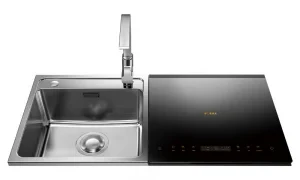Dreaming of a home gym but worried about the price tag? Ditch the gym membership and say hello to sweat savings! Building your own home gym can be surprisingly affordable, especially when you tap into the world of wholesale gym equipment.
This Blog will show you how to create a killer workout space without breaking the bank, from finding the best deals on gear to maximizing your space and planning effective routines.
The Wholesaling Advantage:
Forget the retail markups! Gym equipment suppliers offer significantly lower prices on fitness equipment, often selling directly to the public or through fitness-focused online retailers. You can score incredible deals on everything from dumbbells and kettlebells to treadmills and weight benches.
Where to Find Wholesale Gems:
- Fitness equipment manufacturers: Many manufacturers sell directly online or through dedicated warehouse locations. Research brands you like and see if they offer wholesale options.
- Fitness equipment distributors: These companies act as middlemen between manufacturers and retailers, often selling excess inventory at discounted prices. Look for online distributors specializing in specific types of equipment, like strength training or cardio.
- Liquidation sales: Gyms closing down or upgrading their equipment often sell off their old gear at incredible discounts. Keep an eye out for local liquidation sales or online auctions.
- Used equipment: Don’t underestimate the power of pre-loved equipment! Online marketplaces and local classifieds are treasure troves for gently used gym gear at a fraction of the original price. Be sure to inspect equipment before buying and prioritize quality over cheap deals.
Building Your Budget Gym:
Start with the Basics:
Focus on versatile equipment that allows for a variety of workouts. Essential items include:
- Dumbbells: A set of adjustable dumbbells offers countless exercises for the upper and lower body.
- Kettlebells: These dynamic weights are perfect for swings, cleans, and other functional exercises.
- Resistance bands: Lightweight and affordable, bands add variety and progressive resistance to your workouts.
- Pull-up bar: No home gym is complete without a pull-up bar for building upper body strength.
- Yoga mat: This versatile mat is essential for floor exercises, stretching, and yoga routines.
Maximize Your Space:
Get creative with your space! Utilize corners, walls, and unused areas to optimize your gym layout. Consider these options:
- Wall-mounted storage: Free up floor space with shelves for weights, resistance bands, and accessories.
- Folding equipment: Look for collapsible benches, racks, and treadmills for easy storage.
- Multifunctional equipment: Invest in pieces that serve multiple purposes, like weight benches with built-in storage or squat racks with pull-up bars.
Wholesale Perks, DIY Hacks:
- Heavyweight savings: Bulk buying at wholesale prices offers significant discounts on items like weight plates, kettlebells, and resistance bands.
- Get crafty: Repurpose furniture or everyday items for DIY gym equipment. For example, cinder blocks can create sturdy weight stands, and sturdy chairs can double as exercise benches.
- Embrace the outdoors: Don’t limit yourself to indoor space! Utilize your backyard or balcony for bodyweight exercises, jump rope workouts, or even setting up a pull-up bar between trees.
Planning Your Workouts:
With equipment in place, it’s time to get moving! Here are some tips for building effective home gym routines:
- Focus on compound exercises: These movements engage multiple muscle groups simultaneously, maximizing your workout efficiency. Examples include squats, lunges, rows, and presses.
- Utilize online resources: A wealth of free workout routines are available online for various fitness levels and goals. Find platforms like YouTube channels or fitness apps that cater to your interests.
- Variety is key: Don’t stick to the same routine every day! Challenge your muscles with different exercises and equipment combinations to keep your workouts fresh and effective.
- Track your progress: Monitoring your progress keeps you motivated and helps you refine your routines. Invest in a simple fitness tracker or keep a workout journal to monitor your strength, endurance, and overall fitness gains.
Conclusion:
Remember, building a home gym is a journey, not a destination. Start small, prioritize safe and effective exercises, and most importantly, have fun! With a little planning and resourcefulness, you can create a budget-friendly home gym that fuels your fitness goals and saves you money in the long run. So, lace up your shoes, grab your weights, and let’s get sweating!








































